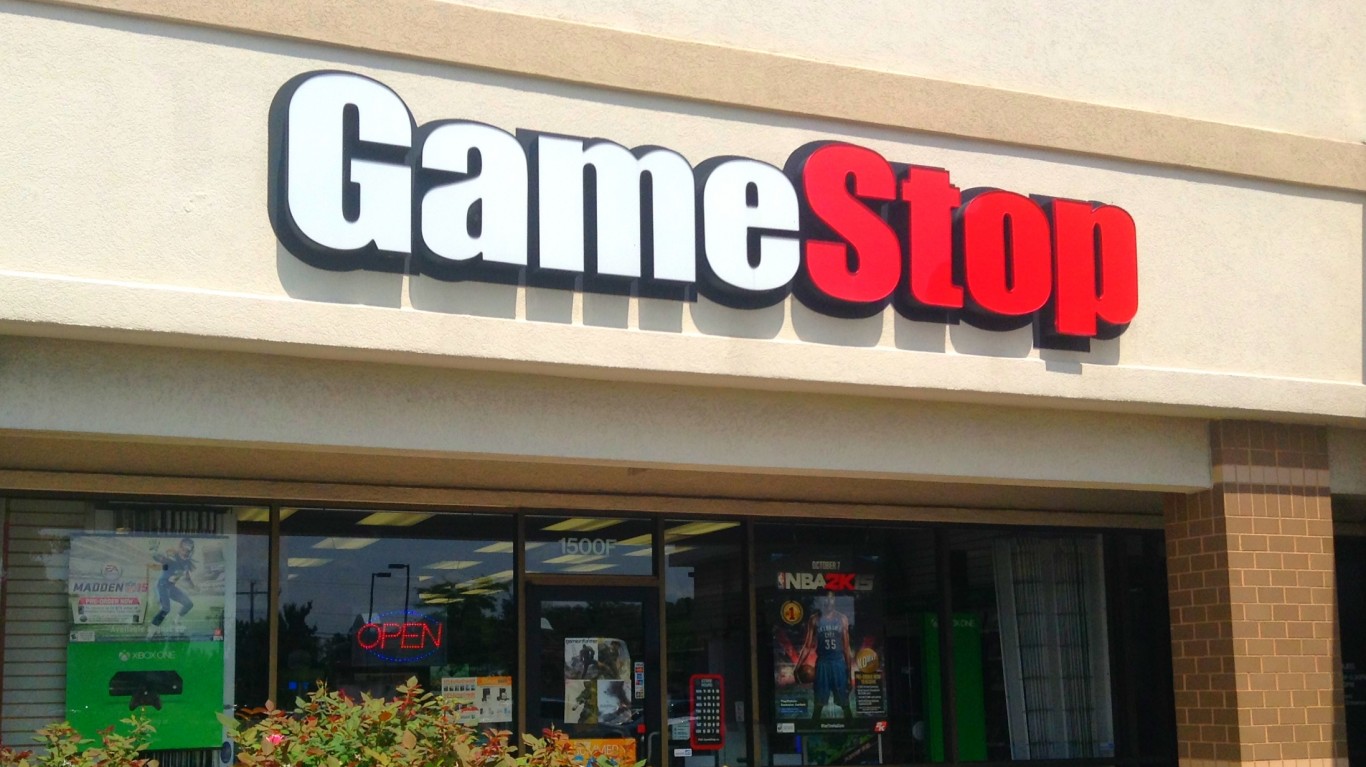Investing
GameStop's Premarket Surge Has Investors Wondering if Squeeze is Back On

Published:
Last Updated:

Video game retailer GameStop Corp (US:GME) stock is up 40% in Wednesday’s premarket trading following yesterday’s results announcement of fourth-quarter of 2022.
For investors, who’ve seen the video-game retailer ride the meme-stock phenomenon through the pandemic and beyond, the question is could the GME stock squeeze be back on?
To begin with, 21.75% of the float is currently shorted (56.85 million shares) with 12.43 days to cover. Fintel’s Short Squeeze Score of 70.80 is bullish on the likelyhood that a squeeze is going to occur, ranking GME in the top 20% out of 4,890 screened stock candidates.
We also noticed the borrow fee rate for GME has increased sharply over the last few weeks leading into the result date.
Ahead of Consensus
In the fourth quarter, GME reported a 1.2% decline in net sales to $2.226 billion from $2.254 billion in 2021. The sales number was slightly ahead of consensus forecasts of around $2.180 billion.
For the segments, two out of three divisions posted sales growth over the year while one division continued to lag.
Hardware and accessories posted 4.5% sales growth over the year to $1.243 billion. Collectibles sales rose 12.1% to $313.2 million. The Software segment posted continued declines in sales with a 14.7% drop to $670.4 million.
Underlying profits measured by adjusted EBITDA were healthy at $82.5 million, rising from negative $126.9 million in the prior period.
GameStop’s cost cutting efforts were evident in SG&A expenses falling to $453.4 million in Q4 of 2022 compared to $538.9 million in 2021. Efforts to reduce inventory continued with $682.9 million recorded on the balance sheet, down from $915.0 million in the prior year.
These efforts helped GameStop in generating a healthy bottom line positive net income of $48.2 million, up from a net loss of $147.5 million in Q4 of 2021. The net profit equated to earnings per share of 16 cents, faring much better than analyst forecasts for a loss of 15 cents per share.
In Healthier Shape
On the conference call, CEO Matthew Furlong discussed how GameStop is in much healthier shape than it was in early 2021 with considerable cash on hand, negligible debt, streamlined debt and a path to full-year profitability.
“Our plan is to use this strong positioning to continue delivering a unique customer experience and long-term shareholder value,” Furlong said.
GameStop ended the year with cash, cash equivalents and marketable securities of $1.39 billion, providing healthy liquidity for future plans.
In the days leading up to yesterday’s results, Wedbush Securities analyst Michael Pachter thought consensus sales forecasts for the quarter were generous and expected short-term headwinds to tamp down the result.
Wedbush maintained its underperform call on the stock and $5.30 per share target price.
Fintel’s consensus target price of $12.90 is bearish on the outlook for the company, suggesting the stock could fall more than 20% this year. The bearish trend has stuck with the company for several years with the valuation disconnected from reality, due to the significant retail share ownership.
Analysts in the market do not foresee the company to generate sales growth in the coming year as shown on the forward revenue estimate chart to the right.
On the institutional front, Fintel’s Fund Sentiment Score of 30.80 is bearish on the company based on its below average levels of buying activity. This low score ranks GME in the bottom 20% out of 35,825 globally screened securities.
Fintel’s options data on GME noticed strong bearish trades by investors before the release. On Tuesday, $523.5 thousand of net premium was sold with the preceding Friday and Monday also reporting net premium sales as investors worried about a negative print.
This article originally appeared on Fintel
Retirement can be daunting, but it doesn’t need to be.
Imagine having an expert in your corner to help you with your financial goals. Someone to help you determine if you’re ahead, behind, or right on track. With SmartAsset, that’s not just a dream—it’s reality. This free tool connects you with pre-screened financial advisors who work in your best interests. It’s quick, it’s easy, so take the leap today and start planning smarter!
Don’t waste another minute; get started right here and help your retirement dreams become a retirement reality.
Thank you for reading! Have some feedback for us?
Contact the 24/7 Wall St. editorial team.